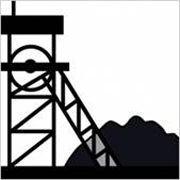 |
Metal/Nonmetal Operators Exposure Monitoring Requirements Guidance
|
 |
|---|
Consistent with the Secretary's vision of "Good Jobs for Everyone" and her goal for safe and healthful workplaces, MSHA is placing increased emphasis on identifying and controlling health hazards in the mining workplace. In accordance with 30 CFR 56.5002 and 57.5002, MSHA encourages all metal and nonmetal operators to conduct dust, gas, mist and fume surveys as frequently as necessary to determine if their controls are adequately protecting miners. In Agency inspections, MSHA will be evaluating operator activities to verify evidence of surveys. MSHA has placed resources on this website, including 'best practices' for dust in Metal and Nonmetal Mines.
MSHA, in its inspection activities, will place an increased emphasis on mine operators' surveying of health hazards. This is a shift from reacting to MSHA's enforcement of overexposures to MSHA enforcement of the mine operators' requirement to conduct health hazard surveys and make appropriate changes to ensure miners are not overexposed to contaminants. Mine operators must demonstrate compliance rather than relying on enforcement interventions. MSHA will emphasize that mine operators:
- Plan - A system to find and fix health hazards.
- Prevent - Health hazards through implementation of the system.
- Protect - Miners from the health hazard.
It is the mine operator's responsibility to ensure that proper surveying is conducted at the mine to protect miners against overexposures to hazardous contaminants. MSHA, in its inspection activities will place an increased emphasis on monitoring of health hazards. Toward that end, MSHA requires mine operators to continuously evaluate health hazards in their mines.
To conduct an effective survey, persons conducting the surveying must be knowledgeable or experienced on how to and how often to measure the particular contaminant. If the results of any samples taken in the course of a survey under §§ 56.5002 and 57.5002 indicate that exposure of a dust, gas, mist or fume is greater than the exposure limit, MSHA expects the operator to adjust control measures and conduct additional surveys to determine whether or not control measures are adequate. Therefore, the operator is required to survey as frequently as necessary to determine the adequacy of control measures.
The following information is provided to assist mine operators in planning a system to survey as frequently as necessary to determine the adequacy of the engineering or administrative control measures.
DISCLAIMER: MSHA is providing these best practices, methods, and equipment as guidance to assist operators in designing a healthy workplace for miners. This guidance is not all inclusive and should not be relied upon to serve as site-specific industrial hygiene or health recommendations. Because each mine has unique conditions and features, each operator is responsible for tailoring its monitoring program to meet its individual needs.
Public Domain Resources
- Current Standards
Private Resources
The following is a nonexclusive list of private sources of information or services. Some of these services may charge a fee. MSHA does not endorse any of the provided sources, their information, or their services.
- "A Strategy for Assessing and Managing Occupational Exposures, Third Edition". Edited by J.S. Ignacio and W.H. Bullock. Available for a cost.

- 'Occupational Exposure Assessment for Air Contaminants', Gurumurthy Ramachandran, University of Minnesota, Minnesota, USA. Available for a cost from CRC Press.

- The American Industrial Hygiene Association provides a list of:
- Professional consultants that assist in sampling.

- Accredited laboratories that conduct analysis of samples.

- Professional consultants that assist in sampling.
-
Industry associations and insurance companies can provide free or low cost assistance to members and policy holders with safety and health program implementation. The following provide safety and health consultation:
Many other local and national mining associations may provide (based on mine size, geography, or commodity) contracted sampling resources.
Many businesses provide industrial hygiene sampling equipment. The following is a short, nonexclusive list of sources of sampling equipment. MSHA does not endorse any of the products, suppliers, or manufacturers provided.
